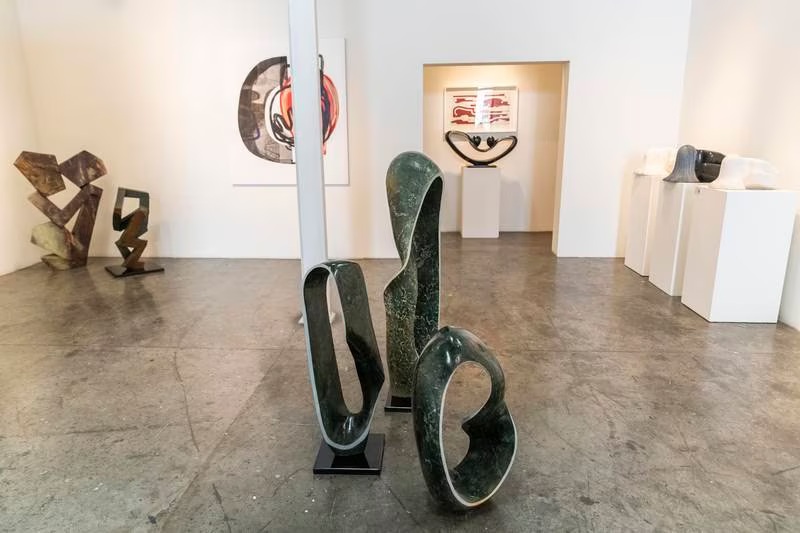Maan Jalal
Zimbabwe is known for its incredible natural beauty, history and rich culture, and an exhibition in Dubai is highlighting those aspects with a collection of works showcasing the country’s traditional Shona sculptures.
Mestaria Gallery in Alserkal Avenue is hosting a group exhibition titled The Shona Collective until Friday, featuring works by nine Zimbabwean artists who create sculptures from carved stone using techniques and styles unique to the country.
Demitris Petrides founded The Shona Collective atelier in Zimbabwe’s capital Harare, where the exhibiting artists create their work. As the curator of the new group exhibition, he was passionate about introducing Shona artists’ work to new audiences and, in the process, changing the perception of Zimbabwe.
“My main core artists from the Shona collective are all from different walks of life,” Petrides tells The National. “Every single one has a different style. That’s the beauty of this Shona collective movement. There’s nothing that’s similar.”
The exhibition showcases figurative, stylised and abstract pieces made from a number of stones indigenous to Zimbabwe, with interesting textures and surfaces.
From graceful figures and abstract geometric shapes to horses and flying birds, the works are meticulously hand-carved.
“If you showed 10 people one of the modern sculptors’ works and asked them to guess where it’s from, they would have no idea that it’s Zimbabwean,” Petrides says. “And then when they hear the story about the stone and the history of the art movement, they become really interested in it.”
Shona is the predominant tribe in Zimbabwe, as well as the name of the language. The Shona art movement is not dominated by one particular style, but by many varying aesthetics and visual perspectives under the umbrella of sculpture.
Shona sculpture emerged in Zimbabwe during the 1960s, when the first generation of sculptors started to experiment with indigenous stone from the land. Back then, they were predominantly using spring stone, a dark grey serpentinite, creating minimalist work that wasn’t considered technically sophisticated.
But by the late 1980s, a second generation of sculptors emerged, using a wider variety of stone and experimenting with techniques. New materials included green opal, a softer stone with a marble-like surface; cobalt, which contains a mixture of colours, including gold, green, purple and grey; dolomite, a pure white stone and leopard stone, a bright green and yellow stone.
Pieces by some well-known second-generation artists, such as Lovemore Bonjisi and Witness Bonjisi, also known as the Bonjisi brothers, are included in the group exhibition. Both artists draw inspiration from the work of Pablo Picasso, particularly his use of sharp lines, hard edges and exaggerated forms.
Picasso himself was heavily influenced by African sculpture, traditional African masks and other forms of African art, which he studied in the early 1900s.
The collection also includes the works of one of the movement’s most famous sculptors, Dominic Benhura. Extremely stylised and playful, Benhura’s pieces explore the subject of family, predominantly mothers and children engaged in everyday, intimate moments of joy.
Gregory Mutasa is another prominent Shona artist whose works are on show. He creates beautifully crafted one-off pieces of bathing figures, often with flowing hairstyles and delicate poses, which have made his work instantly recognisable and coveted by collectors around the world.
Other artists include David White, Bywell Sango, Gregory Tawanda Makore, Royal Katiyo and Leonard Shezendo, all of whom have varying styles, perspectives and techniques.
This diversity of practice within Shona Art, Petrides believes, is one of the strengths of the movement, not only catering to different tastes, but also presenting a varied picture of Zimbabwe’s culture.
“What we try to do and what the artists try to do is bring out more happiness through the stones and through this art form,” he says. “When people find out this work is from Zimbabwe they think it’s fascinating. So the artists themselves and me, we try to bring out the positive side of Zimbabwe to the world.”
Courtesy: thenationalnews







